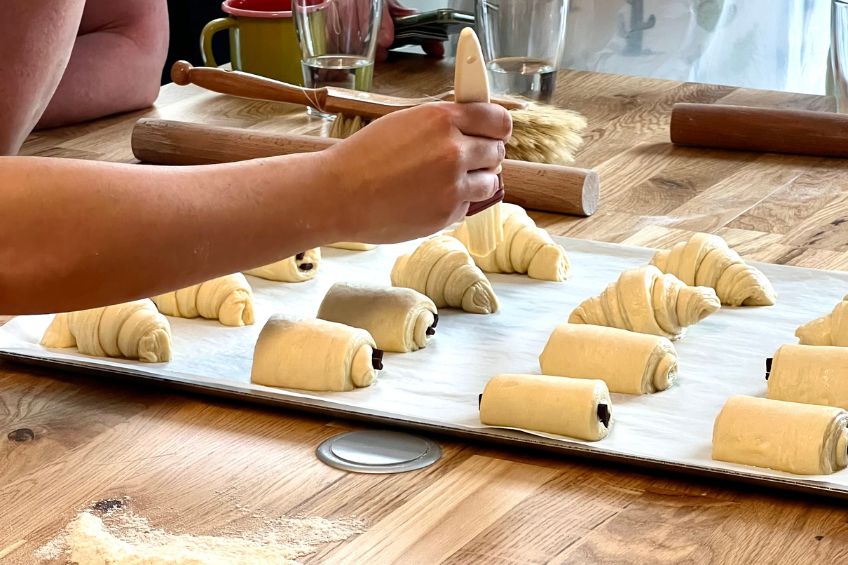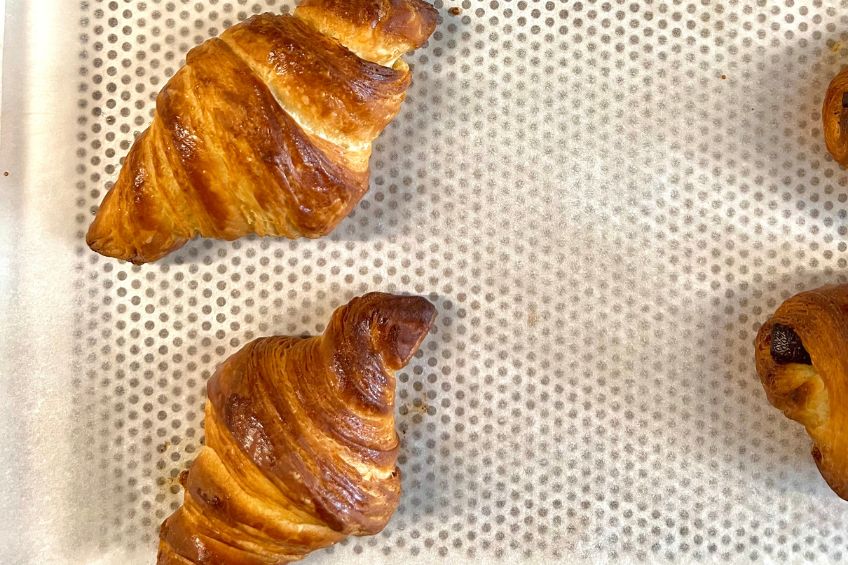
A question you probably haven’t asked yourself before, but really should: is the croissant actually French? Everyone’s favourite pastry has a long heated history baked into its buttery layers, and we’re here to unravel the truth.
If you’ve ever been to a bakery in France, you might have seen a small sign in the pastry window that reads viennoserie. The French term refers to pastries made in the style of Vienna (Austria). During the early 1800s, Austrian military officer August Zang made his way to France – some believe at the request of Marie Antoinette. Upon his arrival, Zang introduced a variety of traditional Austrian pastries during the opening of his Parisian boulangerie in 1939. To Zang’s surprise, the pastries were a big success – in particular the kipferl or croissant. This crescent shaped buttery delight ushered in a new category of baked goods in French culture.
With that in mind, does that mean the croissant is inherently Austrian? Surely the debate ends there, right? Not quite.
Related: Ina Garten’s Favourite Spots in Paris

The Louvre in Paris, France
Let them eat…croissants!
To understand this complex history further, we need to go back in time just a smidge. Some Historians argue that the first introduction of the croissant came by way of Marie Antoinette in the early 1800s. It’s said Marie demanded the delivery of her “favourite treat” from her home in Austria. Others say croissants were introduced by an Austrian baker after the successful prevention of a Turkish invasion in 1638. The baker in question developed a pastry in the shape of the crescent moon depicted on the Turkish flag as a way to celebrate their victory. Evidence however indicates the kipferl predates those events as far back as the 10th century. So what’s the truth here?
What we know for certain is that August Zang brought kipferl to France. What’s unclear is how the French adopted this pastry and elevated it to become France’s most adored snacks.
Related: How to Make the Perfect Croissant Croque Madame

Lamination of croissants
Mastery comes into play
Croissants are said to be one of the most difficult foods to master as it requires many hours to prepare and bake. An important step excluded in making kipferl was lamination – a process used to create the buttery layers in a croissant. Lamination was likely introduced to the French by various Arab countries in the 13th century. It was only until the 19th century that the lamination technique became popular among French pastry chefs. The process of lamination defined what a French croissant truly is by comparison.
Even still, there was little consensus on what the flavour of the croissant should be. 19th century pastry chefs began integrating ingredients like pistachios, chocolates and creams into croissants. The battle for “who had the best croissant” seemed leaned towards “who was the most unique”. This constant back and forth led to popular variations like pain au chocolat and pain aux raisins. Yet in order to truly make claim to the croissant, French pastry chefs needed to align on one thing.
Related: Brunch Just Got Sweeter with This Tiramisu French Toast

Freshly baked French croissants
Defining the process
By standardizing the process of making croissants, pastry chefs could finally argue the key difference between French and Austrian design. The most important factors in making French croissants became the proofing process, ingredient quality and lamination technique. In recent years, French pastry chefs have even shifted away from the crescent moon design in favour of a straight edged croissant. It’s unclear if this move was to further themselves from their Viennese history or to usher in a new movement within the pastry world.
It’s safe to say the modern croissant is quintessentially French, while the kipferl in it’s varied forms is undeniably Austrian. Both are delicious in their own right, and over time, chefs will likely innovate them to become something new and reflective of the times (as all food should be). Even today, French pastry chefs are adapting foods like muffins and cookies. Until then, we’ll gladly eat every iteration of these delightful baked goods that we can get our hands on.
